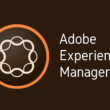Introduction
Embracing the Open Source Revolution: The Future of Technology Unfolded
In an era where technological innovation seems boundless, there lies a powerful force driving this transformation: Open Source Software (OSS). At its core, open source is more than just a method for developing computer software; it’s a philosophy, a collaborative effort where the source code is freely available for modification, enhancement, and redistribution by anyone. This concept, which once seemed like a utopian idealist’s dream, has now become a cornerstone in the world of technology.
The importance of open source in the current technological landscape cannot be overstated. It has democratized software development, allowing individuals and companies across the globe to contribute to and benefit from a collective pool of knowledge and resources. From small startups to tech giants, open source software has become a critical component of their development strategies, powering everything from web servers and operating systems to cutting-edge applications in artificial intelligence and beyond.
But what does this mean for the future of technology? Imagine a world where innovation is not confined by the walls of proprietary systems but is driven by a community of creators and thinkers united by a shared goal of advancing technology for all. Could the open source movement be the catalyst for an unprecedented era of technological advancement, reshaping the way we interact with technology in our daily lives? This is not just a possibility; it’s a burgeoning reality, as we stand on the cusp of a new age where open source software is not just a part of the future – it is the future.
As we delve deeper into this topic, let’s explore how open source software is shaping the current tech landscape and what it heralds for the future of technology. Join me on this journey through the realms of open source, where collaboration, innovation, and a shared vision are redefining what’s possible in the tech world.
Section 1: Understanding Open Source
Subsection 1.1: Defining Open Source Software and Its Principles
Open Source Software (OSS) is defined as computer software that is released with its source code made available to users. This allows them to read, modify, and distribute the software freely. OSS is underpinned by two fundamental principles: transparency and collaboration. Transparency means that the inner workings of the software are open to public scrutiny, fostering trust and continuous improvement. Collaboration, on the other hand, is the cornerstone of open source, where developers from across the globe contribute to the software, enhancing its functionality and security.
The essence of open source is captured in the Open Source Initiative’s definition, which outlines criteria like free redistribution, source code availability, and the allowance of modifications and derived works. These principles create a vibrant, inclusive, and innovative environment that propels the software beyond the limitations of individual creators or companies.
Subsection 1.2: Historical Context and Evolution of Open Source
The concept of open source has its roots in the early days of computing, where software was often shared among academics and researchers. However, the actual term “open source” was coined much later, in the late 1990s. One pivotal moment in its history was the release of the Netscape Navigator source code in 1998, marking a significant shift in how software was developed and distributed.
Since then, open source has evolved from a niche approach to a mainstream strategy adopted by many technology giants. The early 2000s witnessed the rise of iconic open source projects like the Linux kernel, Apache web server, and the MySQL database. These projects demonstrated the viability and strength of the open source model, leading to its widespread adoption across various sectors, from enterprise solutions to consumer applications.
Subsection 1.3: Key Differences Between Open Source and Proprietary Software
The primary difference between open source and proprietary software lies in the accessibility and control of the source code. In open source software, the source code is freely accessible to anyone, allowing for modifications, enhancements, and redistribution. This leads to a more community-driven development process, where improvements and innovations are shared collectively.
In contrast, proprietary software, often referred to as closed source software, is developed, controlled, and distributed by a specific company or individual. The source code is usually a closely guarded secret, and users are typically restricted in how they can use or modify the software. This model offers control and a business model centered around licensing fees, but it often lacks the flexibility and collaborative nature of open source.
Section 2: The Role of Open Source in Modern Technology
Subsection 2.1: Integration of Open Source in Current Technology Trends
In today’s digital world, open source software (OSS) is not just a component of the tech industry; it is a fundamental driver. Its integration is evident across various current technology trends. For instance, in cloud computing, open source solutions like Kubernetes and Docker have revolutionized how applications are deployed and managed. In the realm of big data, tools like Hadoop and TensorFlow offer powerful, scalable solutions that are accessible to both small firms and large enterprises.
Furthermore, open source plays a pivotal role in the development of artificial intelligence (AI) and machine learning, with platforms like Python’s TensorFlow and Facebook’s PyTorch leading the charge. These tools are not only pushing the boundaries of what’s possible in AI but also democratizing access to these cutting-edge technologies.
Another notable trend is the Internet of Things (IoT), where open source platforms like Arduino and Raspberry Pi provide the backbone for countless IoT devices and projects. This widespread adoption across different technology sectors underscores how open source is integral to the evolution and accessibility of modern technology.
Subsection 2.2: Case Studies: Successful Open Source Projects and Their Impact
To understand the impact of open source, one must look at the success stories. One of the most significant examples is the Linux operating system. Born out of a personal project by Linus Torvalds, Linux now powers a significant portion of the internet, including most web servers and cloud infrastructure. Its success is attributed not only to its robustness and security but also to the global community of developers that continually enhance and secure it.
Another success story is the Apache HTTP Server, which played a crucial role in the initial growth of the World Wide Web. Apache remains a critical component of the internet infrastructure, demonstrating the sustainability and effectiveness of the open source model.
These case studies show how open source projects can grow from small, community-driven initiatives to become foundational elements in the technology we rely on daily.
Subsection 2.3: The Collaborative Nature of Open Source Development
The collaborative nature of open source development is what truly sets it apart. Unlike proprietary software, where development occurs in a closed environment, open source projects thrive on community involvement. This model encourages a diverse range of perspectives, leading to more innovative and resilient software solutions.
Collaboration in open source goes beyond just coding. It encompasses bug reporting, feature suggestions, and community support, creating a comprehensive ecosystem of contribution and improvement. This inclusive and participatory approach has fostered a global community of developers, users, and advocates who are not only passionate about individual projects but also about the open source philosophy itself.
The success of this collaborative model is evident in how quickly open source projects can adapt to new challenges, how resilient they are to vulnerabilities, and how rapidly they innovate. It’s a testament to the power of collective effort and shared knowledge in advancing technology.
Section 3: Why Open Source is Crucial for Future Innovation
Subsection 3.1: How Open Source Fosters Innovation and Creativity
Open source software (OSS) stands at the forefront of driving innovation and creativity in the tech world. Its model breaks down barriers to entry, allowing anyone with an idea to contribute and collaborate. This openness leads to a melting pot of ideas, where diverse perspectives converge to solve complex problems and create novel solutions.
Innovation in open source is also driven by its flexibility and adaptability. Developers are not bound by rigid corporate guidelines or proprietary constraints, allowing them to experiment and iterate rapidly. This freedom to explore and tinker has led to groundbreaking advancements and unique approaches to software development.
Furthermore, the very nature of open source encourages a culture of continuous improvement. Since the code is publicly available, it can be scrutinized, fine-tuned, and enhanced by anyone with the skill and interest. This communal effort not only accelerates the pace of innovation but also ensures that the software evolves in response to real-world needs and feedback.
Subsection 3.2: Open Source in Future Tech Advancements (AI, IoT, etc.)
Looking ahead, the role of open source in future technological advancements is undeniable. In the field of Artificial Intelligence (AI) and Machine Learning (ML), open source tools and libraries are already fueling innovation. Frameworks like TensorFlow and PyTorch are not only accessible to researchers and developers worldwide, but they also foster collaborative advancements in AI research and application.
In the Internet of Things (IoT) domain, open source platforms such as Arduino and Raspberry Pi serve as the foundation for countless innovations, from smart home devices to industrial automation systems. These platforms provide a versatile and affordable means for hobbyists and professionals alike to create and experiment with IoT solutions.
Beyond AI and IoT, open source is poised to play a critical role in emerging fields like quantum computing, blockchain, and more. Its collaborative nature and the rapid iteration cycle will continue to be vital in exploring these uncharted technological territories.
Subsection 3.3: Open Source as a Tool for Democratizing Technology
Perhaps one of the most significant aspects of open source is its role in democratizing technology. By making software freely available and modifiable, open source removes the gatekeeping often associated with proprietary software. This democratization means that individuals and organizations, regardless of their size or resources, have access to high-quality, cutting-edge technology.
This accessibility is crucial in developing countries or underrepresented communities, where open source tools can empower individuals and spur local innovation. It creates opportunities for education, entrepreneurship, and technological advancement that might otherwise be inaccessible.
Moreover, as technology increasingly becomes a part of our everyday lives, the open source movement ensures that its development is inclusive and participatory. It champions the idea that the best technological solutions arise from diverse collaboration and shared knowledge, making it an essential element for driving future innovation.
Section 4: Benefits and Challenges of Open Source
Subsection 4.1: Advantages of Open Source for Developers and Businesses
The open source model offers a plethora of advantages for both developers and businesses. For developers, it provides an unparalleled platform for learning, collaboration, and career development. By contributing to open source projects, developers can sharpen their skills, learn new technologies, and build a portfolio that showcases their capabilities to potential employers.
Businesses, on the other hand, benefit from the cost-effectiveness and flexibility of open source software. With no licensing fees, companies can significantly reduce software costs. Moreover, the ability to modify and adapt the software to specific needs allows for customized solutions that can better serve business requirements.
Open source also accelerates innovation within businesses. By leveraging the collective knowledge and contributions of the open source community, companies can develop products faster and more efficiently. Additionally, the inherent transparency and security of open source software make it a reliable choice for businesses looking to build robust and secure digital infrastructure.
Subsection 4.2: Addressing Challenges and Misconceptions About Open Source
Despite its advantages, open source faces certain challenges and misconceptions. One common challenge is the issue of support and maintenance. Unlike proprietary software that comes with vendor support, open source software relies on community support, which can be variable. However, this is increasingly addressed by the emergence of companies offering professional support and services for open source products.
Another misconception is that open source software is less secure because its code is publicly available. In reality, this transparency often leads to higher security standards, as vulnerabilities are quickly identified and addressed by the community.
Finally, there is a misconception regarding the quality of open source software. Some assume that because it is free, it is of lower quality. However, the collaborative nature of open source development often results in highly refined and reliable software, as seen in the success of Linux, Apache, and other open source projects.
Subsection 4.3: Real-world Examples Where Open Source Made a Significant Impact
The impact of open source is evident in various success stories across industries. One notable example is the Linux operating system, which powers the majority of internet servers, demonstrating the reliability and robustness of open source software.
In the healthcare sector, open source platforms like OpenMRS (Medical Record System) have revolutionized healthcare management in developing countries. This platform allows for the creation of customizable medical record systems, improving the efficiency and quality of care in resource-limited environments.
Another example is the Apache Hadoop project, which has become a backbone for big data processing, used by major companies like Yahoo and Facebook. This project showcases how open source can handle massive scale and complex data operations, driving advancements in data analytics and storage.
Section 5: Open Source Software Development Trends
Subsection 5.1: Current Trends in OSS Development
The landscape of open source software (OSS) development is constantly evolving, driven by emerging technologies and changing market demands. One significant trend is the increasing adoption of open source in enterprise environments. Companies are not only using open source software but also actively contributing to it, recognizing the value of being part of the development community.
Another trend is the rise of open source contributions in areas like artificial intelligence (AI), machine learning (ML), and the Internet of Things (IoT). These fields are seeing a surge in open source projects, which are becoming pivotal in driving innovation and accessibility in these technologies.
Furthermore, there’s a growing emphasis on diversity and inclusion within the open source community. Initiatives to involve underrepresented groups in OSS development are gaining momentum, aiming to bring diverse perspectives and ideas to the table.
Subsection 5.2: Predictions for Future Trends in the Open Source Landscape
Looking ahead, several predictions can be made about the future of open source software development. One is the increasing intersection of open source with cloud computing. As cloud technologies continue to dominate, more open source tools and platforms are expected to emerge, catering specifically to cloud-based applications and services.
Another prediction is the growing significance of open source in cybersecurity. With cyber threats becoming more sophisticated, open source solutions are likely to play a key role in developing new security technologies and strategies.
Additionally, open source is expected to be integral in the advancement of edge computing. As computing moves closer to the source of data, open source platforms are likely to be at the forefront, providing the necessary tools and frameworks for this shift.
Subsection 5.3: Insights from Industry Experts and Leaders in Open Source
Insights from industry experts and leaders in open source further illuminate these trends. Leaders emphasize the importance of community and collaboration in driving the future of open source. They highlight that as technology becomes more integrated into our lives, the principles of open source – transparency, collaboration, and inclusivity – will become increasingly important.
Experts also point out the challenges facing open source, such as ensuring sustainable funding and maintaining the security and quality of projects amid rapid growth. However, they remain optimistic about the ability of the open source community to tackle these challenges, given its history of resilience and innovation.
In summary, the future of open source software development is vibrant and full of potential. With its ever-expanding role in the tech industry, OSS is set to continue its trajectory as a driving force behind major technological advancements.
Section 6: How to Get Involved in Open Source
Subsection 6.1: Guide for Beginners to Start Contributing to Open Source Projects
Entering the world of open source can be an enriching experience, both professionally and personally. For beginners, the first step is understanding your skills and interests. Are you a coder, a designer, a writer, or an organizer? Open source projects need diverse skills beyond just coding.
Next, find a project that aligns with your interests. Websites like GitHub, GitLab, and SourceForge host a myriad of open source projects. Start by browsing projects in a language you’re familiar with, or search for projects that work on issues you’re passionate about.
Once you’ve identified a project, start small. Begin by reading the project’s documentation, understanding its contribution guidelines, and exploring its issue tracker. Look for ‘good first issue’ tags which are typically suited for newcomers.
Then, get involved in the community. Join the project’s mailing list, chat channels, or forums. Introduce yourself and don’t hesitate to ask questions. Remember, the open source community is generally welcoming and values contributions of all kinds.
Finally, make your first contribution. It could be fixing a bug, writing documentation, or improving the project’s website. What matters is taking that first step and gradually building your confidence and skills.
Subsection 6.2: Resources and Communities for Open Source Enthusiasts
There are numerous resources and communities available to support your journey in open source. Websites like Open Source Guides offer comprehensive guides on how to contribute to open source. For finding projects to contribute to, First Timers Only and Up For Grabs are great starting points.
Additionally, communities such as FreeCodeCamp and CodeNewbie are excellent for learning and connecting with other beginners. For those interested in specific technologies, communities like the ReactJS Community or Apache Software Foundation offer a more focused environment.
Remember, attending local meetups, hackathons, and conferences can also be a great way to connect with the open source community.
Subsection 6.3: Personal Anecdote or Experience in Open Source
Embarking on your open source journey can be transformative. Personally, contributing to an open source project for the first time was a milestone. It began with small documentation fixes in a web development tool I frequently used. The sense of community and achievement when my pull request was accepted was unparalleled. This experience taught me not just about coding, but about collaboration, perseverance, and the shared joy of contributing to something bigger than myself.
Conclusion
As we wrap up our exploration into the world of Open Source Software (OSS), it’s clear that the landscape of technology is being profoundly shaped by the principles and practices of open source. From its humble beginnings to its current status as a cornerstone of modern technology, open source has proven to be a powerful force for innovation, collaboration, and progress.
We’ve seen how open source fosters creativity and innovation, allowing developers and businesses to benefit from a collective pool of knowledge and resources. We’ve delved into the historical context of open source, understanding its evolution and how it contrasts with proprietary software models. The success stories of projects like Linux and Apache underscore its impact and the collaborative nature that drives its development.
Looking to the future, open source is set to play an even more significant role in emerging technologies like AI, IoT, and cloud computing. Its capacity to democratize technology access and encourage global participation makes it a crucial element in the advancement of tech for the common good.
The benefits of open source, coupled with the challenges it faces, paint a picture of a vibrant, evolving landscape that beckons your participation. Whether you’re a seasoned developer or a newcomer to the tech world, there’s a place for you in the open source community.
I encourage you, the reader, to take the plunge into the world of open source. Start by exploring projects that resonate with your interests or skills. Contribute, learn, and be part of a global community that’s shaping the future of technology. Your journey in open source is not just about coding; it’s about being part of a movement that values collaboration, innovation, and the open sharing of knowledge.
As we look ahead, the potential of open source as the future of technology is not just promising; it’s already unfolding. By embracing open source, we can all be part of this exciting and transformative journey. Let’s come together to contribute, innovate, and drive the future of technology forward, one open source project at a time.









